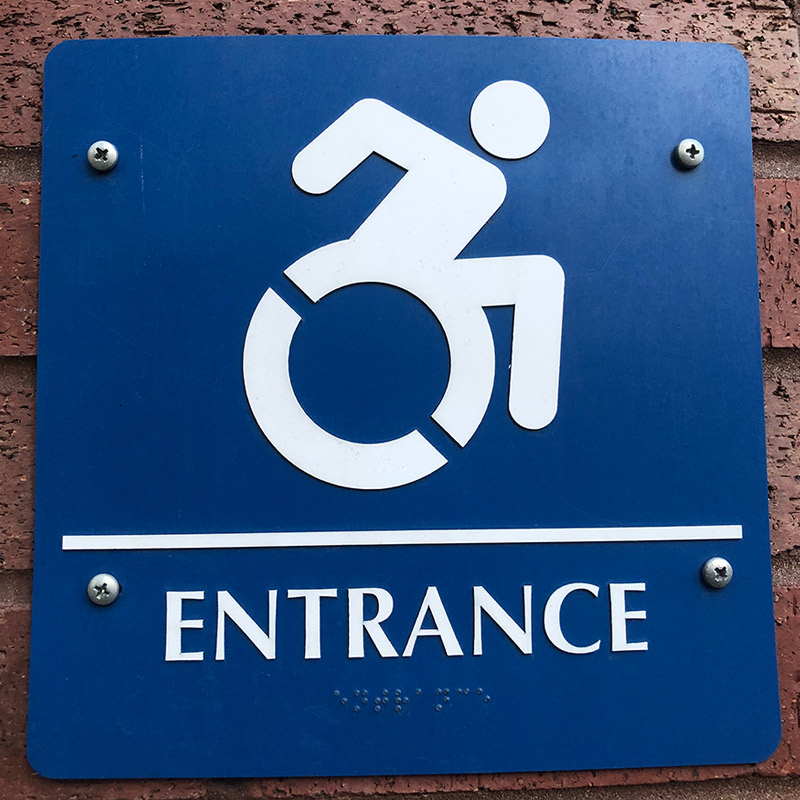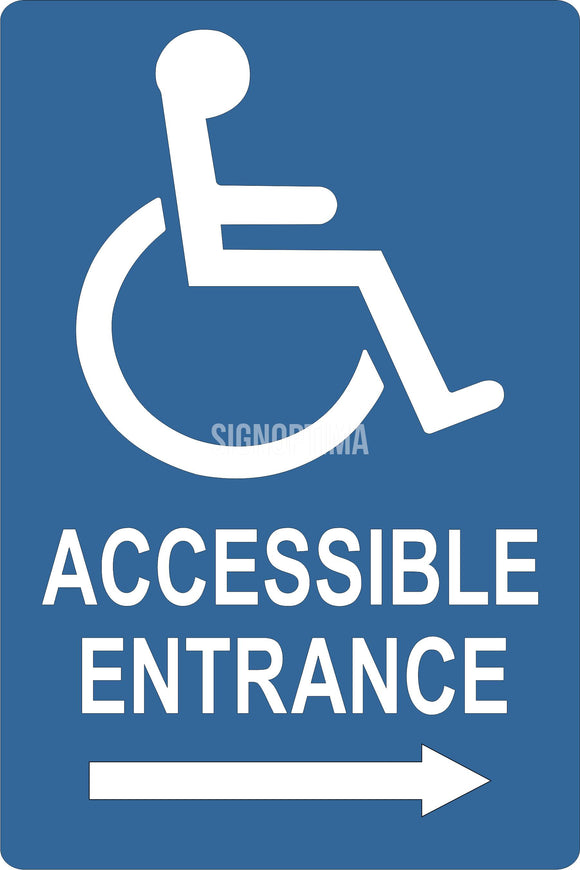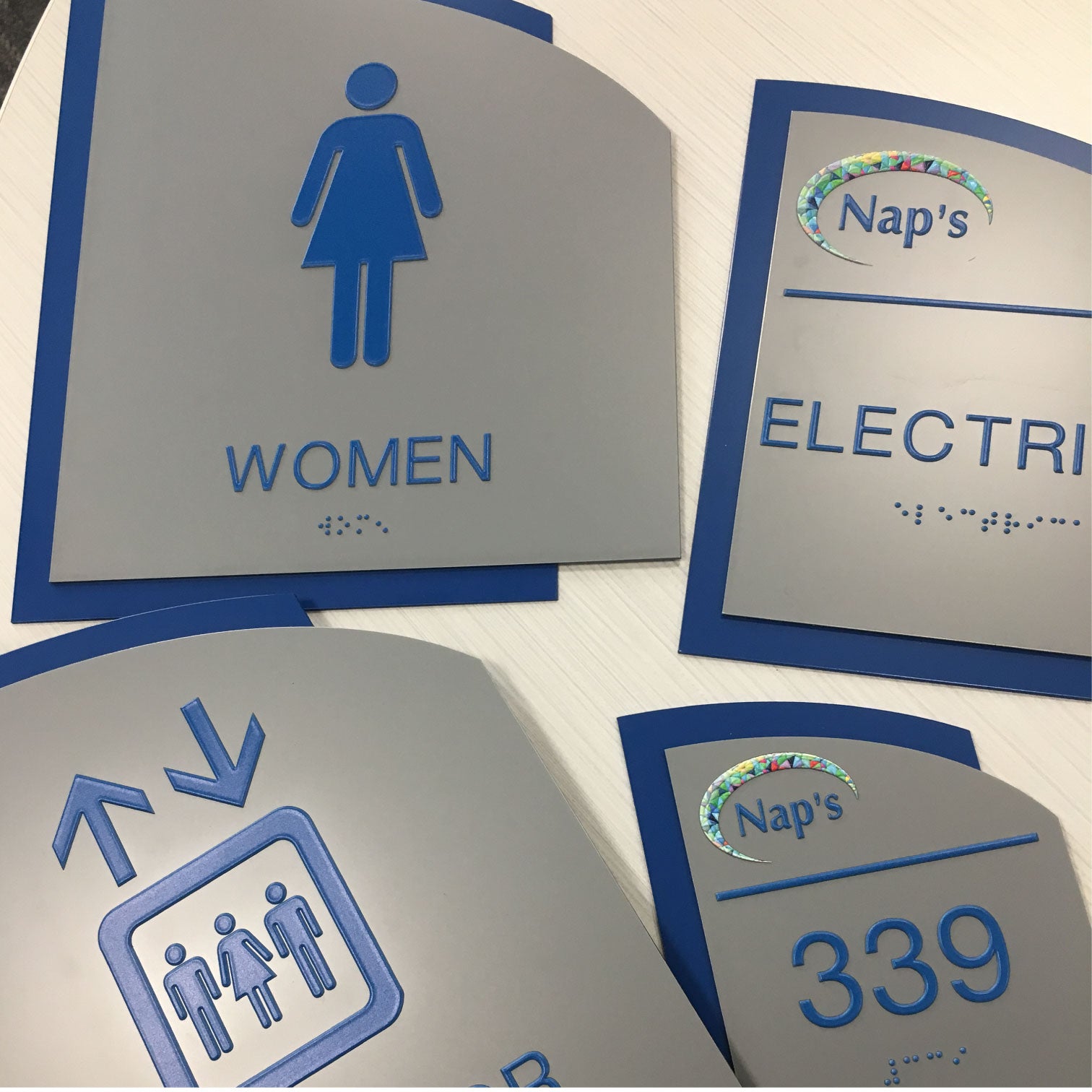ADA Signs: Crucial Tools for Inclusive Environments
ADA Signs: Crucial Tools for Inclusive Environments
Blog Article
Discovering the Key Features of ADA Indications for Improved Ease Of Access
In the world of ease of access, ADA signs act as quiet yet powerful allies, making certain that rooms are navigable and comprehensive for people with impairments. By integrating Braille and tactile elements, these indicators damage barriers for the aesthetically impaired, while high-contrast color pattern and readable fonts accommodate diverse aesthetic requirements. In addition, their strategic positioning is not approximate however rather a calculated initiative to assist in seamless navigating. Yet, beyond these attributes exists a much deeper narrative about the development of inclusivity and the continuous dedication to creating fair spaces. What more could these indications signify in our pursuit of global accessibility?
Value of ADA Compliance
Making certain conformity with the Americans with Disabilities Act (ADA) is crucial for cultivating inclusivity and equivalent accessibility in public rooms and workplaces. The ADA, established in 1990, mandates that all public facilities, companies, and transport solutions fit individuals with impairments, guaranteeing they take pleasure in the very same legal rights and opportunities as others. Compliance with ADA criteria not only fulfills lawful obligations yet also enhances an organization's reputation by showing its commitment to variety and inclusivity.
One of the key facets of ADA conformity is the execution of easily accessible signage. ADA indications are developed to ensure that individuals with specials needs can easily browse via structures and spaces. These signs must abide by details standards concerning size, font style, color contrast, and positioning to assure visibility and readability for all. Effectively executed ADA signs helps eliminate obstacles that people with specials needs often come across, therefore advertising their freedom and self-confidence (ADA Signs).
Furthermore, adhering to ADA regulations can reduce the danger of legal repercussions and prospective penalties. Organizations that fall short to conform with ADA standards might face lawsuits or penalties, which can be both harmful and financially troublesome to their public image. Therefore, ADA compliance is integral to cultivating an equitable atmosphere for every person.
Braille and Tactile Elements
The unification of Braille and tactile components into ADA signage personifies the principles of availability and inclusivity. It is usually put underneath the corresponding message on signage to make certain that individuals can access the details without visual support.
Tactile elements extend past Braille and include increased personalities and signs. These components are developed to be noticeable by touch, allowing people to recognize area numbers, toilets, departures, and various other vital locations. The ADA sets details standards concerning the size, spacing, and placement of these tactile elements to maximize readability and make sure consistency across different atmospheres.

High-Contrast Shade Schemes
High-contrast color systems play a pivotal role in boosting the exposure and readability of ADA signs for people with visual impairments. These plans are important as they maximize the distinction in light reflectance between message and history, making sure that signs are easily noticeable, also from a range. The Americans with Disabilities Act (ADA) mandates the use of specific color contrasts to accommodate those with restricted vision, making it a critical aspect of compliance.
The efficiency of high-contrast colors hinges on their capacity to attract attention in various lights problems, including poorly lit environments and areas with glow. Usually, dark message on a light background or light message on a dark history is used to attain optimum comparison. As an example, black text on a yellow or white background gives a stark visual difference that aids in fast recognition and comprehension.

Legible Fonts and Text Dimension
When taking into consideration the layout of ADA signage, the choice of readable fonts and ideal message dimension can not be overemphasized. These components are crucial for ensuring that indications come to people with visual problems. The Americans with Disabilities Act (ADA) mandates that fonts should be sans-serif and not italic, oblique, script, very go to these guys attractive, or of uncommon type. These needs assist make sure that the message is easily legible from a range and that the characters are appreciable to diverse target markets.
According to ADA standards, the minimum message height should be 5/8 inch, and it view publisher site should raise proportionally with checking out range. Consistency in message size adds to a natural aesthetic experience, helping people in browsing settings efficiently.
Additionally, spacing between letters and lines is important to legibility. Ample spacing avoids personalities from appearing crowded, improving readability. By sticking to these standards, designers can substantially enhance accessibility, making certain that signs offers its desired function for all people, no matter their aesthetic capabilities.
Effective Positioning Methods
Strategic positioning of ADA signage is important for taking full advantage of availability and making certain compliance with legal standards. Appropriately positioned indications guide people with impairments effectively, helping with navigating in public spaces. Trick considerations consist of closeness, exposure, and height. ADA standards specify that indications ought to be installed at a height in between 48 to 60 inches from the ground to ensure they are within the line of view for both standing and seated people. This typical elevation variety is crucial for inclusivity, enabling wheelchair individuals and individuals of varying heights to access his explanation information effortlessly.
Additionally, signs must be positioned adjacent to the lock side of doors to permit simple identification prior to entry. Consistency in indication positioning throughout a center enhances predictability, decreasing complication and enhancing general user experience.

Final Thought
ADA signs play a vital function in advertising accessibility by incorporating attributes that deal with the demands of people with impairments. Integrating Braille and responsive elements makes certain essential info comes to the visually damaged, while high-contrast color pattern and clear sans-serif typefaces boost exposure across various illumination problems. Effective positioning techniques, such as ideal placing elevations and critical places, even more help with navigating. These elements jointly cultivate an inclusive environment, highlighting the importance of ADA compliance in ensuring equal accessibility for all.
In the world of ease of access, ADA signs serve as silent yet effective allies, guaranteeing that areas are accessible and inclusive for individuals with disabilities. The ADA, passed in 1990, mandates that all public facilities, companies, and transport services suit people with disabilities, guaranteeing they appreciate the very same rights and chances as others. ADA Signs. ADA indicators are created to ensure that people with specials needs can conveniently browse via buildings and spaces. ADA standards stipulate that indications should be placed at an elevation between 48 to 60 inches from the ground to guarantee they are within the line of view for both standing and seated people.ADA indications play an essential role in advertising ease of access by incorporating functions that deal with the requirements of individuals with specials needs
Report this page